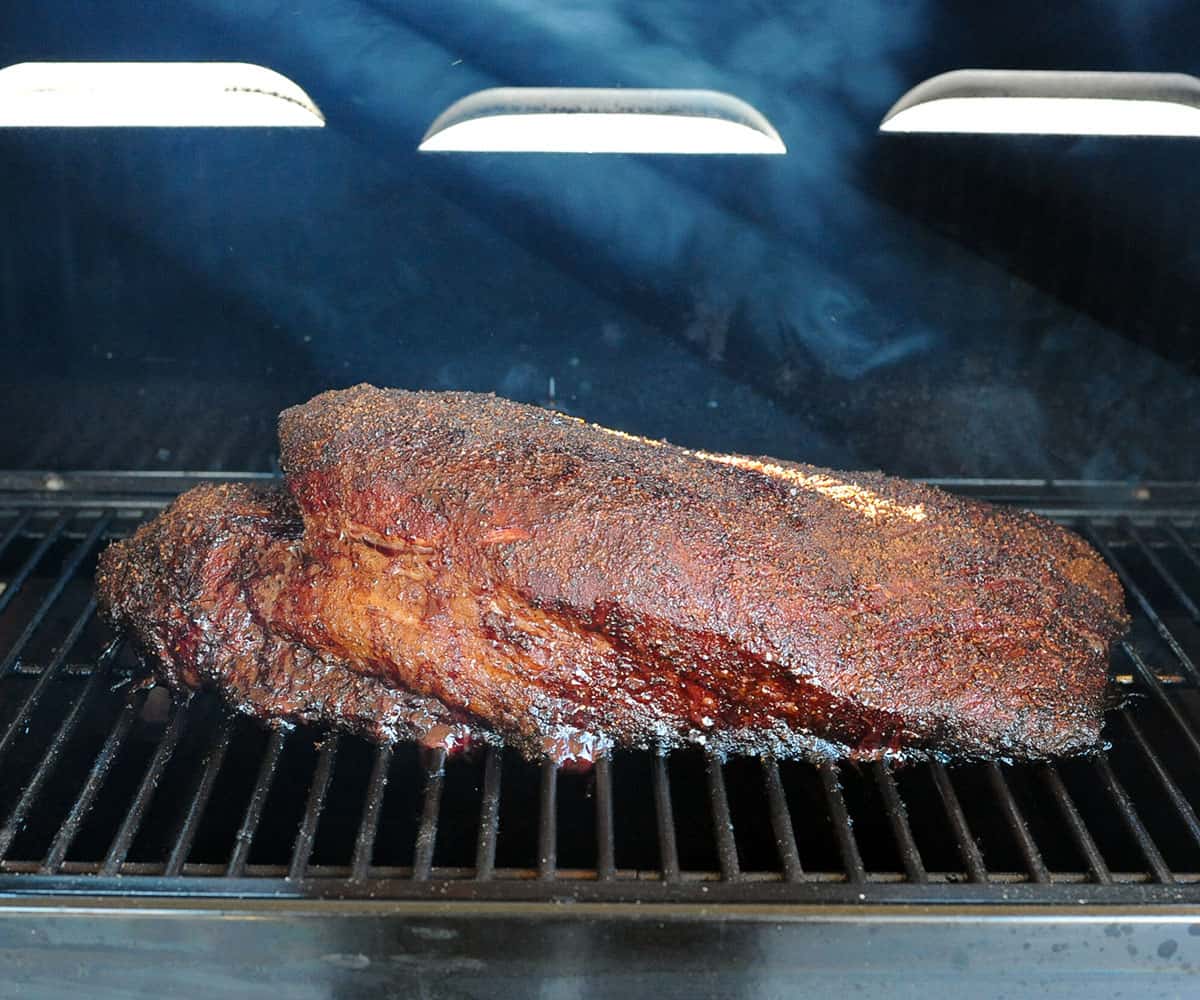

Articles
How To Store Brisket After Smoking
Modified: January 6, 2024
Learn the best methods for storing smoked brisket in this informative article. Find out how to keep your brisket fresh and delicious for longer!
(Many of the links in this article redirect to a specific reviewed product. Your purchase of these products through affiliate links helps to generate commission for Storables.com, at no extra cost. Learn more)
Introduction
Brisket is a delicious and flavorful cut of meat that is often enjoyed after smoking. Whether you’re a barbecue enthusiast or preparing a meal for a special occasion, properly storing brisket after smoking is essential to maintain its flavor and texture. By following the right storage techniques, you can ensure that your brisket remains fresh and tasty even after it has been cooked. In this article, we will explore the importance of proper brisket storage and provide you with useful tips and guidelines to keep your brisket in the best condition.
Brisket is a large cut of meat, typically taken from the breast or lower chest of a cow. It is known for its rich marbling and connective tissue, which gives it a tender and juicy texture when cooked. However, once it has been smoked, it’s important to take the necessary steps to store it properly to maintain its quality.
Proper storage ensures that your smoked brisket remains safe to eat, retains its moisture, and keeps its flavors intact. The last thing you want is to waste all your effort and end up with a dried-out and flavorless piece of meat.
Before we dive into the storage techniques, it’s important to consider a few factors that will affect the quality and shelf life of your brisket. First, the temperature at which you smoked the brisket plays a role in how it should be stored. If you smoked the brisket at a low and slow temperature, it may have a longer shelf life than if it was cooked at a higher temperature. Second, the moisture content of the brisket is important to take into account. Moist briskets tend to have a longer shelf life than drier ones. Lastly, the overall quality of the brisket before smoking will also impact its storage potential. Fresh, high-quality briskets will generally have a longer shelf life than older or lower-grade cuts.
In the following sections, we will guide you through the steps of cooling, resting, slicing, wrapping, refrigerating, freezing, and reheating your smoked brisket. By following these guidelines, you can ensure that your brisket stays fresh, flavorsome, and ready to be enjoyed whenever you desire.
Key Takeaways:
- Properly storing brisket after smoking is crucial for maintaining its flavor, texture, and safety. Following the right techniques, such as cooling, slicing, wrapping, and reheating, ensures your brisket remains fresh and delicious for an extended period.
- Understanding the importance of proper brisket storage and following guidelines for cooling, slicing, wrapping, refrigerating, freezing, thawing, and reheating allows you to maximize the shelf life and enjoyment of your smoked brisket. With care and attention to detail, you can savor the succulent flavors and tender texture of your brisket for days or even months after it has been prepared.
Read more: How To Store Brisket After Cooking
Understanding the Importance of Proper Brisket Storage
Proper storage of brisket is crucial to maintain its quality, flavor, and safety. Here are a few reasons why you should pay attention to how you store your smoked brisket:
Why proper storage is crucial:
- Prolong the freshness: By storing your brisket properly, you can extend its shelf life and keep it tasting fresh for longer periods. This is particularly important if you have leftover brisket or if you plan to enjoy it over the course of several days.
- Maintain flavor and texture: Proper storage prevents the brisket from drying out or absorbing unwanted flavors. It helps to preserve the juiciness and tenderness of the meat, allowing you to enjoy the same delicious flavors you experienced when it was freshly smoked.
- Prevent foodborne illnesses: Brisket, like any other meat, is susceptible to bacterial growth if not stored correctly. Proper storage techniques will help minimize the risk of foodborne illnesses and ensure that your brisket remains safe to eat.
Factors to consider before storing brisket:
Before you proceed with storing your smoked brisket, it’s important to take the following factors into consideration:
- Temperature: Brisket should be stored at the right temperature to prevent bacterial growth. Ensure that your refrigerator or freezer is set to the appropriate temperature for storing meat. This will help maintain the quality of the brisket and ensure its safety.
- Time: The length of time you plan to store the brisket will influence the storage method you choose. If you intend to consume it within a few days, refrigeration is sufficient. However, if you want to preserve it for a longer duration, freezing is the best option.
- Portion size: Consider how much brisket you will need to consume at a time. It’s advisable to cut the brisket into smaller portions before storing to make it easier to thaw and reheat only what you need, preserving the quality of the remaining portions.
- Proper packaging: The packaging material you choose should be suitable for the storage method. It should provide an airtight seal to prevent air exposure, freezer burn, and off-flavors. Additionally, proper labeling will help you identify the contents and date of storage.
By understanding the importance of proper storage and considering these factors, you can ensure that your smoked brisket remains delicious, safe, and enjoyable for an extended period. In the next sections, we will discuss the specific steps you need to follow to store your brisket after smoking.
Cooling and Resting Brisket
After smoking a delicious brisket, it’s important to allow it to cool down properly before storing it. Here are two key steps to follow: allowing the brisket to cool and understanding the importance of resting the brisket.
Read more: How To Smoke A Brisket On A Weber Kettle
Allowing the brisket to cool:
Once your brisket is cooked and has reached the desired internal temperature, remove it from the smoker or grill and place it on a clean cutting board or a wire rack. Allow the brisket to cool at room temperature for about 30 minutes to an hour. This initial cooling period is important as it allows the juices to redistribute throughout the meat, resulting in a more flavorful and juicy final product.
Keep in mind that while the brisket is cooling, it will still be cooking internally due to residual heat. This phenomenon, known as carryover cooking, will continue to tenderize the meat and develop its flavors. Avoid covering the brisket during this cooling period to allow any excess moisture to evaporate.
Importance of resting the brisket:
Resting the brisket is a crucial step in the cooking and storage process. After the initial cooling period, it’s important to rest the brisket before slicing or storing it. Resting allows the meat to reabsorb some of its juices, resulting in a more tender and flavorful brisket. It helps to lock in the moisture and ensures that the meat retains its juiciness, even during storage.
During the resting period, loosely tent the brisket with a sheet of aluminum foil, but make sure it’s not tightly wrapped. This will allow the residual heat to continue cooking the meat, while also preventing excessive moisture loss. Let the brisket rest for at least 1 to 2 hours, although 3 to 4 hours is even better for optimal tenderness and flavor development.
By allowing the brisket to cool and resting it properly, you set the stage for successful storage. These steps help in retaining the juiciness and flavors of the brisket and ensure that it stays tender and moist even after it has been stored. In the next sections, we will discuss how to slice and portion the brisket for storage.
Slicing and Portioning Brisket
Once your brisket has cooled and rested, it’s time to slice and portion it before storing. Proper slicing techniques and portioning are essential to maintain the quality and ease of use when you are ready to enjoy your brisket. Here’s what you need to know:
Proper slicing techniques:
When slicing your brisket, it’s important to follow the grain of the meat. The grain refers to the direction in which the muscle fibers run. Slicing against the grain is crucial as it ensures the meat remains tender and easy to chew. Slicing with the grain can result in chewy and tough texture.
Start by identifying the direction of the grain on your brisket. It usually runs the length of the meat. Using a sharp knife, make perpendicular cuts across the grain, aiming for slices about ¼ to ½ inch thick. Take your time and maintain a steady hand to ensure clean and even slices. Continue slicing until you have enough portions for your desired serving sizes or storage needs.
Read more: How To Store Ribs After Smoking
Portioning the brisket for storage:
Portioning your brisket before storage is a practical step that allows for easier thawing and reheating later on. Instead of storing the entire brisket as a whole, divide it into smaller portions based on how much you typically consume at a time. This way, you can thaw and reheat only what you need, reducing waste and ensuring the quality of the remaining brisket.
Consider the number of people you’ll be serving and the typical portion size. For individual servings, you can cut the brisket into smaller slices or even cube it for added versatility. Alternatively, if you plan to use the brisket for sandwiches or tacos, slice it into longer strips or shred it with a fork.
Use airtight containers or freezer-safe bags to store the portions, making sure to remove as much air as possible to prevent freezer burn. Consider labeling the containers with the date and contents for easy identification later on.
Proper slicing and portioning of your brisket not only facilitate storage but also make it easier to reheat and serve in the future. Remember to slice against the grain and divide the brisket into manageable portions to ensure the best texture and flavor. In the next section, we’ll explore the various methods for wrapping and storing your sliced brisket.
Wrap and Store Brisket
Once you’ve sliced and portioned your brisket, it’s time to wrap and store it properly. Choosing the right wrapping materials and employing the appropriate methods are essential to maintain the quality and prevent freezer burn. Here’s what you need to know:
Choosing the right wrapping materials:
The choice of wrapping materials is crucial for preserving the freshness and preventing freezer burn on your brisket. Here are a few options to consider:
- Plastic wrap: Plastic wrap, or cling film, is a widely used option for wrapping brisket. Ensure the brisket is fully wrapped, leaving no exposed areas to prevent air exposure and moisture loss.
- Foil: Aluminum foil is a popular choice for wrapping brisket, especially for short-term storage in the refrigerator. It offers a good barrier to air and helps retain moisture. Make sure to wrap the foil tightly and seal all edges to prevent leakage.
- Freezer-safe bags: For longer-term storage in the freezer, consider using heavy-duty freezer bags. These bags are designed to prevent freezer burn and provide an additional layer of protection around the brisket.
Methods for wrapping brisket for storage:
Once you have chosen the appropriate wrapping material, follow these methods to wrap and store your brisket:
- Single-layer wrap: This method involves wrapping each portion of brisket individually with plastic wrap or foil. Ensure the wrap is tight, with no air gaps or exposed areas, to prevent air exposure and maintain moisture.
- Double-layer wrap: For added protection, you can opt for a double-layer wrap. Start with a layer of plastic wrap or foil, then follow it up with another layer of the same material or additional protection such as a freezer bag.
- Vacuum-sealing: If you have a vacuum sealer, it is an excellent option for sealing your brisket. Vacuum-sealing removes air from the packaging, minimizing the risk of freezer burn and extending the shelf life of the meat.
Once wrapped, ensure that each portion is properly labeled with the date and contents. This will help you keep track of the storage time and easily identify the brisket when you’re ready to use it.
By choosing the right wrapping materials and employing the appropriate methods, you can ensure that your brisket remains well-protected and maintains its quality during storage. In the next section, we will discuss the best practices for refrigerating your wrapped brisket.
Read more: How To Store Smoked Salmon After Opening
Refrigerating Brisket
Refrigerating your wrapped brisket is a common method for short-term storage. By following proper guidelines, you can ensure that your brisket stays fresh and safe to consume. Here’s what you need to know about storing brisket in the refrigerator:
Storing brisket in the refrigerator:
When storing your wrapped brisket in the refrigerator, it’s important to keep it in the coldest part of the fridge, usually the bottom shelf or crisper drawer. This helps maintain a consistent temperature and minimizes the risk of cross-contamination with other food items.
Place the wrapped brisket in a shallow container or on a tray to catch any potential drippings. This will help keep your refrigerator clean and prevent any liquids from coming into contact with other foods. Ensure that the container is sealed or covered to prevent air exposure and maintain the brisket’s moisture.
It’s important to note that refrigeration is suitable for short-term storage, typically within 3 to 4 days. If you need to store the brisket for a longer duration, consider freezing it for extended shelf life.
Recommended temperatures for refrigeration:
The refrigerator temperature plays a crucial role in maintaining the quality and safety of your brisket. Generally, the recommended temperature range for refrigeration is between 34°F (1°C) and 40°F (4°C).
Setting your refrigerator to a lower temperature within this range, around 36°F (2°C), is ideal for preserving the quality of the brisket. This lower temperature helps slow down bacterial growth and keeps the brisket fresher for a longer period.
It’s important to regularly monitor the temperature of your refrigerator using a reliable thermometer to ensure it remains within the recommended range. This will help maintain the safety and quality of not just your brisket but also other perishable items stored in the fridge.
By properly refrigerating your wrapped brisket at the recommended temperature, you can enjoy its freshness and flavors for a few days. However, if you need to store the brisket for an extended period, it’s best to freeze it. In the next section, we will discuss the guidelines for freezing brisket for long-term storage.
Freezing Brisket
Freezing your brisket is an excellent long-term storage option that allows you to enjoy it at a later time. To ensure the best quality and prevent freezer burn, it’s important to follow proper guidelines for freezing brisket. Here’s what you need to know:
Read more: How To Store A Brisket
Guidelines for freezing brisket:
Follow these guidelines when freezing your brisket:
- Cool and wrap: Before freezing, make sure your brisket has cooled completely and is properly wrapped to prevent air exposure. Refer to the previous section on wrapping and storing brisket for guidance on choosing the right wrapping materials and methods.
- Portion and package: If you haven’t done so already, divide your brisket into individual portions based on your needs. This will allow you to thaw and use only what you need, reducing waste. Place each portion in a separate freezer-safe bag or airtight container.
- Remove air: Squeeze out as much air as possible from the freezer bags before sealing them. Alternatively, if using containers, ensure they have tight-fitting lids to create an airtight seal. Removing air helps to prevent freezer burn and maintain the quality of the brisket.
- Label and date: Properly label each package or container with the date of freezing and a description of the contents. This will make it easier for you to keep track of the storage time and identify the brisket later on.
- Freeze promptly: Place the wrapped and labeled brisket portions in the freezer as soon as possible after they have been prepared. This helps maintain the quality and prevents any potential temperature fluctuations that could affect the longevity of the meat.
Proper packaging and labeling for frozen brisket:
When packaging your brisket for freezing, consider using high-quality freezer bags or freezer-safe containers. These materials are designed to provide a good barrier against air and moisture, reducing the risk of freezer burn.
Labeling each package or container is crucial for easy identification. Include the date of freezing and a brief description of the contents, such as “Smoked Brisket” or “Beef Brisket”. This information will help you determine the storage time and identify the specific portion when it’s time to thaw and use the brisket.
It’s also a good practice to arrange the brisket packages in your freezer in an organized manner, such as stacking them vertically, so that you can easily access the specific portions you need without disturbing the rest of the freezer contents.
By following these guidelines for freezing, packaging, and labeling, you can extend the shelf life of your brisket and enjoy its delicious flavors even months later. In the next section, we will discuss the proper thawing and reheating methods for your frozen brisket.
Thawing and Reheating Brisket
When you’re ready to enjoy your frozen brisket, it’s important to thaw and reheat it properly to preserve its flavor and texture. Here are the steps for safely thawing frozen brisket and the various methods for reheating:
Safely thawing frozen brisket:
Thawing your frozen brisket properly is essential to maintain its quality and ensure even heating. Here are a few safe thawing methods to consider:
- Refrigerator thawing: The safest method for thawing brisket is to transfer it from the freezer to the refrigerator. Place the frozen brisket on a plate or tray to catch any drippings and allow it to thaw slowly in the refrigerator for 24 to 48 hours, depending on the size of the portion. This gradual thawing process helps maintain the texture and quality of the brisket.
- Cold water thawing: If you need to thaw the brisket more quickly, you can submerge the tightly-sealed frozen package in a bowl or sink filled with cold water. Ensure that the brisket remains fully wrapped to prevent any water absorption. Change the water every 30 minutes to maintain a safe temperature. This method can take several hours, depending on the size of the portion.
- Microwave defrosting: If you’re in a hurry, you can use the defrost setting on your microwave. Follow the microwave’s instructions for defrosting meat and be sure to monitor the brisket closely to avoid partial cooking. Once it has thawed, remember to cook/reheat it immediately as the microwave defrosting may begin to partially cook the brisket.
Read more: How To Store Brisket
Methods for reheating brisket:
Once your brisket is fully thawed, you can proceed to reheating using various methods:
- Oven: Preheat your oven to a low temperature, around 250°F (120°C). Place the sliced or whole brisket in an oven-safe dish or on a baking tray, cover it with foil to retain moisture, and heat until warmed through. This method may take around 30 minutes to 1 hour, depending on the size and thickness of the brisket.
- Grilling: If you want to add a smoky flavor or reheat the brisket with a slight char, grilling is a great option. Preheat your grill to medium heat and place the thinly sliced or whole brisket on the grates. Grill for a few minutes on each side until heated through and slightly charred.
- Sous vide: The sous vide method involves cooking the brisket in a water bath at a precise temperature. If you have a sous vide cooker, you can vacuum-seal the portioned brisket and cook it at a lower temperature, typically around 135°F (57°C), for a few hours. This method helps retain the meat’s juiciness and tenderness.
- Slow cooker: Place the sliced or cubed brisket in a slow cooker, add some liquid or barbecue sauce to prevent drying out, and cook on low heat for a few hours until heated through. This method is convenient and allows the flavors to meld together.
Remember to monitor the internal temperature of the brisket using a meat thermometer to ensure that it reaches a safe temperature of 165°F (74°C) for food safety. Once reheated, serve and enjoy your delicious brisket!
Following these guidelines for thawing and reheating will help you enjoy your frozen brisket with the same tenderness and flavors as when it was freshly smoked. In the next section, we will provide you with some additional tips to maximize the storage and enjoyment of your brisket.
Tips for Maximizing Brisket Storage
To ensure the maximum shelf life and quality of your brisket during storage, it’s important to avoid common storage mistakes and follow some helpful tips. Consider the following recommendations:
Avoiding common storage mistakes:
Here are a few common storage mistakes to avoid when storing your brisket:
- Leaving the brisket at room temperature for too long: After smoking, it’s important to cool and refrigerate or freeze the brisket promptly. Leaving it at room temperature for an extended period can lead to bacterial growth and compromise its quality.
- Not utilizing proper wrapping materials: Ensure that you choose appropriate wrapping materials such as plastic wrap, foil, or freezer bags. These materials should provide airtight seals and protect the brisket from air exposure, which leads to freezer burn.
- Using the wrong storage containers: Select containers that are specifically designed for freezer storage. Avoid using containers that are not airtight, as it can allow air and moisture to permeate, leading to freezer burn and dehydration.
- Not properly labeling and dating the brisket: Accurate labeling and dating are important for keeping track of the storage time and identifying the contents. Ensure your labels are clear and include the date of storage to avoid confusion and waste.
Tips for extending the shelf life of brisket:
To extend the shelf life of your brisket and maintain its quality during storage, consider the following tips:
- Use vacuum-sealing: Investing in a vacuum sealer can greatly enhance the shelf life of your brisket. Vacuum-sealed packages minimize air exposure and prevent freezer burn, allowing the brisket to stay fresh for an extended period.
- Properly portion the brisket: Instead of storing the entire brisket, slice and portion it before storage. This allows you to thaw and reheat only what you need, preserving the quality and reducing waste.
- Keep consistent temperature: Maintain the optimal temperature in your refrigerator and freezer to ensure the longevity and quality of your brisket. Regularly check the temperature with a thermometer to ensure it remains within the recommended range.
- Keep track of storage time: Keep note of the storage time for your brisket. Properly label each package or container with the date of storage to avoid keeping the brisket past its recommended storage duration.
- Consume older brisket first: If you have multiple portions or packages of brisket with different storage dates, make sure to consume the older ones first to prevent any potential spoilage or quality degradation.
By avoiding common storage mistakes and following these tips, you can maximize the shelf life of your brisket and ensure that it remains delicious and enjoyable for as long as possible.
Now that you have a comprehensive understanding of storing brisket after smoking, you can confidently enjoy your flavorful, tender, and properly stored brisket whenever the craving strikes. By following the proper storage techniques and guidelines, you can savor the taste of your smoked brisket for days or even months after it has been prepared.
Remember, proper storage not only maintains the quality and flavor of your brisket but also ensures its safety. With these tips and techniques, you can make the most of your smoked brisket and continue to enjoy its deliciousness for an extended period of time.
So go ahead, smoke that brisket to perfection, and store it with care. Your future self will thank you when you can enjoy a mouthwatering plate of brisket at any time!
Read more: How To Store Pulled Pork After Smoking
Conclusion
Properly storing brisket after smoking is essential to maintain its flavor, texture, and safety. By following the guidelines and tips outlined in this article, you can ensure that your smoked brisket remains fresh, delicious, and ready to be enjoyed whenever the craving strikes.
Understanding the importance of proper brisket storage is the first step towards ensuring its quality. Proper storage extends the freshness, maintains the flavor and texture, and minimizes the risk of foodborne illnesses.
Cooling and resting the brisket before storing it allows the juices to redistribute and the flavors to develop. Slicing and portioning the brisket make it easier to store and use, and ensure even reheating later on.
Choosing the right wrapping materials, such as plastic wrap, foil, or freezer bags, and employing proper wrapping methods help protect the brisket from air exposure, prevent freezer burn, and maintain its moisture and flavor. Refrigerating the brisket at the recommended temperature range, between 34°F (1°C) and 40°F (4°C), ensures its safety and freshness for a few days.
For longer-term storage, freezing the brisket is the best option. Proper packaging, removing as much air as possible, and clearly labeling the packages with the date of freezing and contents are important steps to maintain the quality and easily identify the brisket in the freezer.
When it’s time to enjoy your frozen brisket, safely thawing it is crucial. Use methods like refrigerator thawing, cold water thawing, or microwave defrosting to thaw the brisket gradually and maintain its texture. Reheating methods such as using an oven, grilling, sous vide, or a slow cooker ensure the brisket is heated through while maintaining its tenderness and flavors.
Avoiding common storage mistakes and following tips like using vacuum-sealing, properly portioning the brisket, maintaining consistent temperatures, and tracking the storage time can help extend the shelf life of your brisket and maintain its quality.
In conclusion, by understanding the importance of proper storage, following the necessary steps for cooling, slicing, wrapping, refrigerating, freezing, thawing, and reheating, you can maximize the storage and enjoyment of your smoked brisket. These techniques will help you savor the succulent flavors and tender texture of your brisket for days or even months after it has been smoked. So, smoke that brisket to perfection, store it with care, and savor the incredible flavors whenever you desire!
Frequently Asked Questions about How To Store Brisket After Smoking
Was this page helpful?
At Storables.com, we guarantee accurate and reliable information. Our content, validated by Expert Board Contributors, is crafted following stringent Editorial Policies. We're committed to providing you with well-researched, expert-backed insights for all your informational needs.
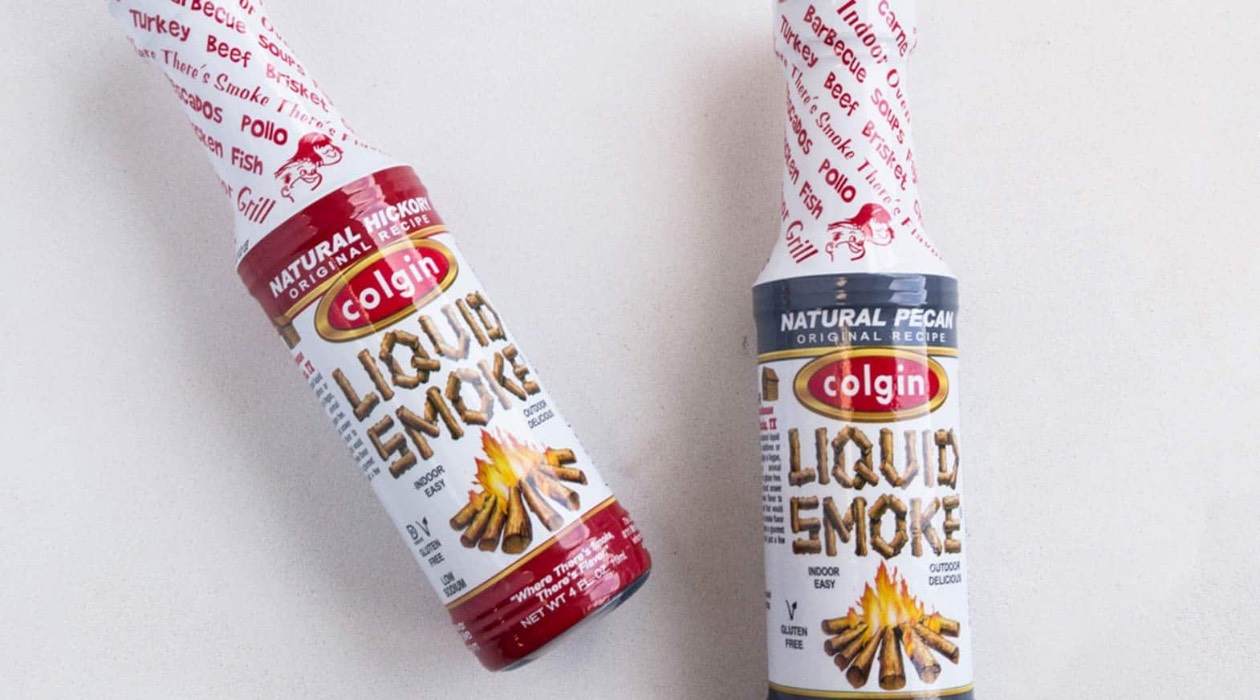
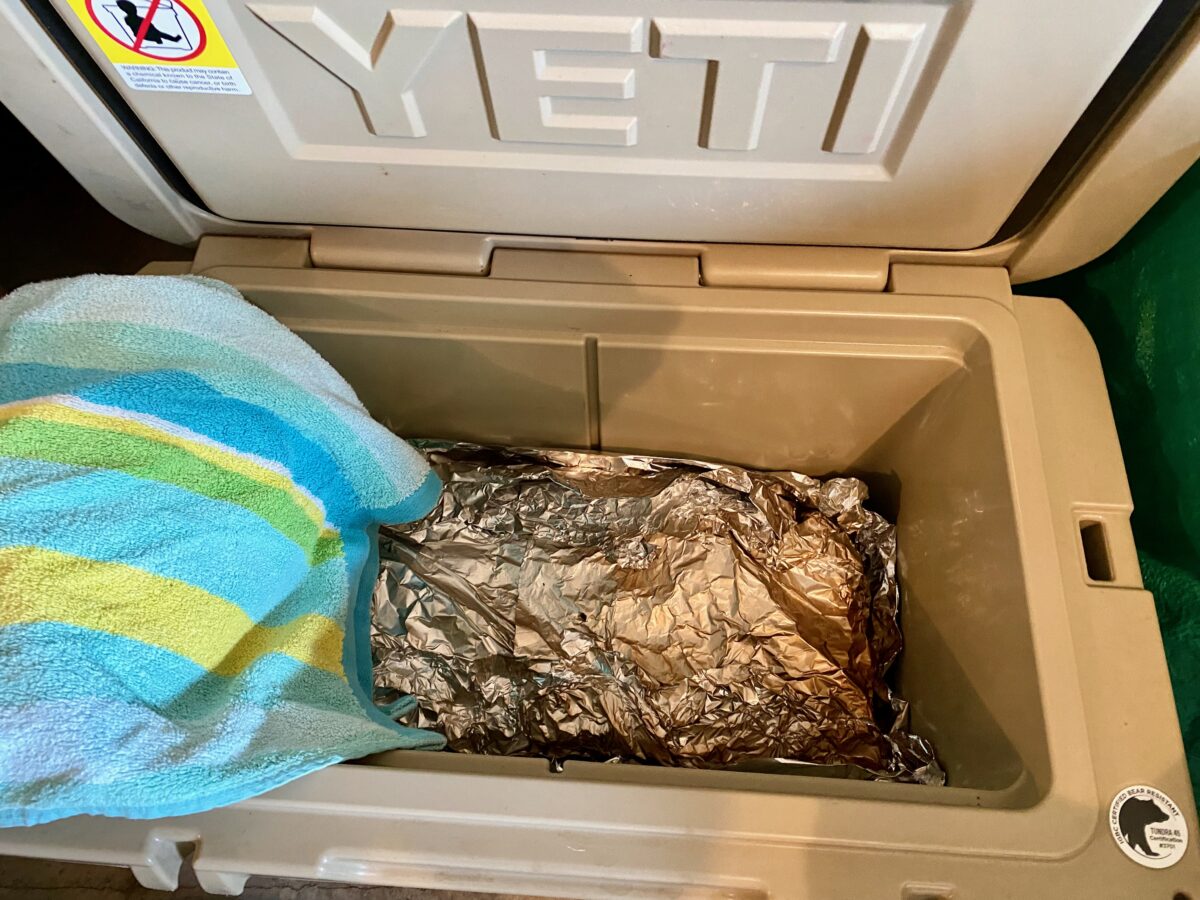

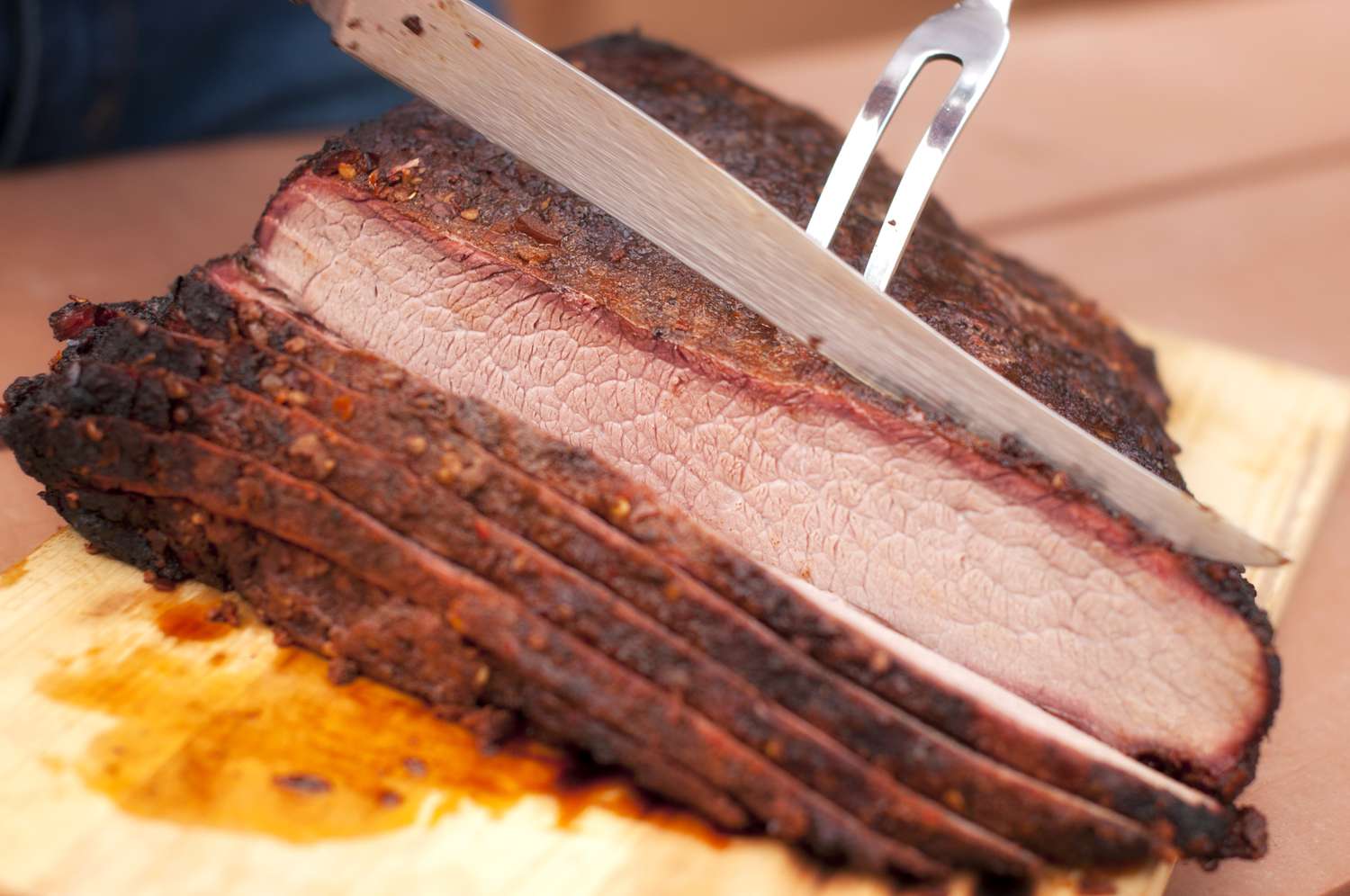
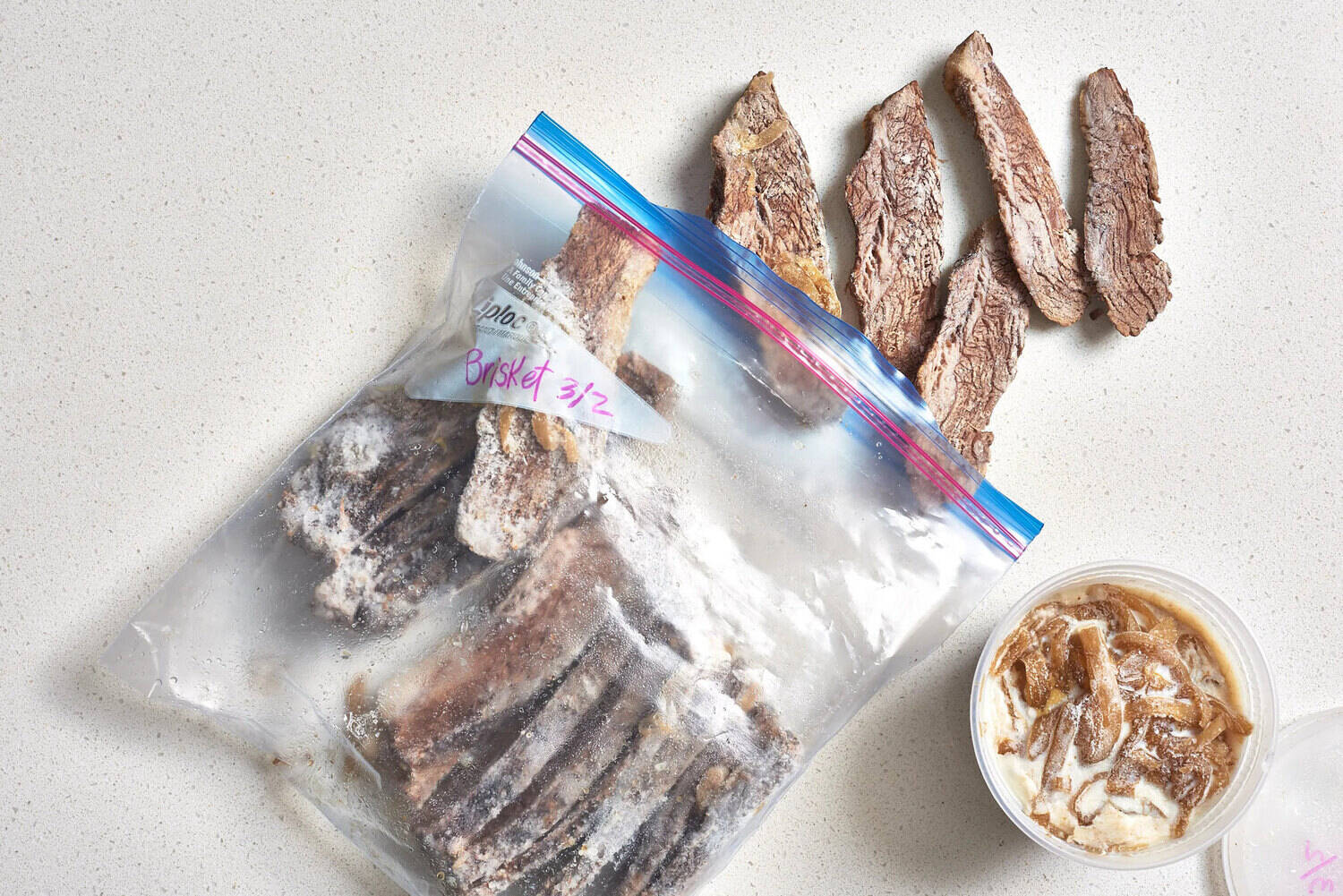
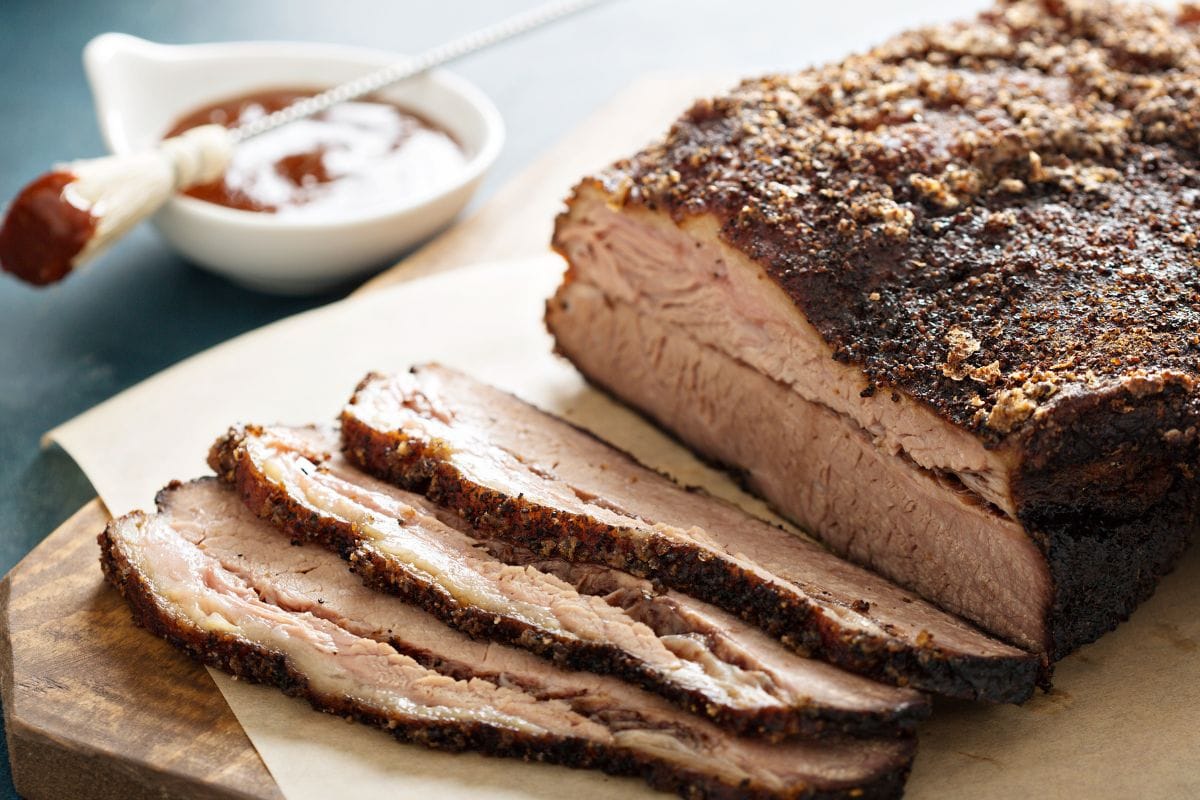
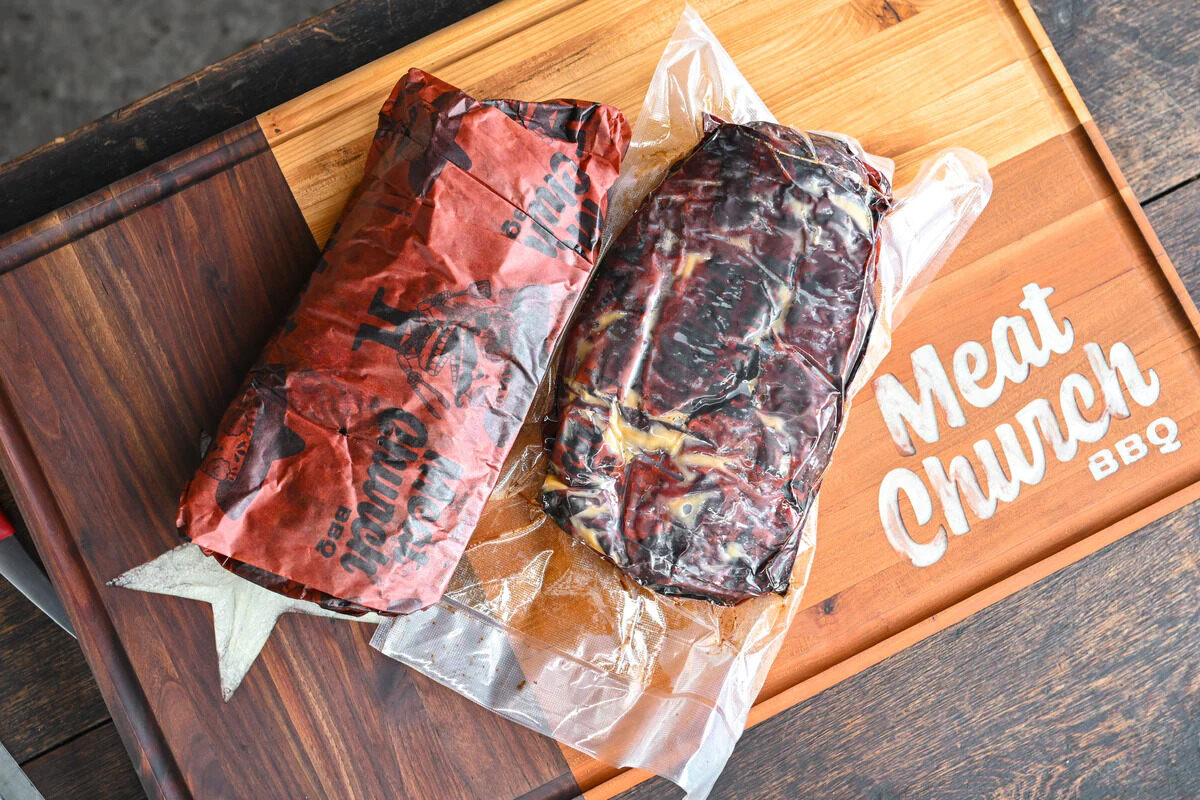
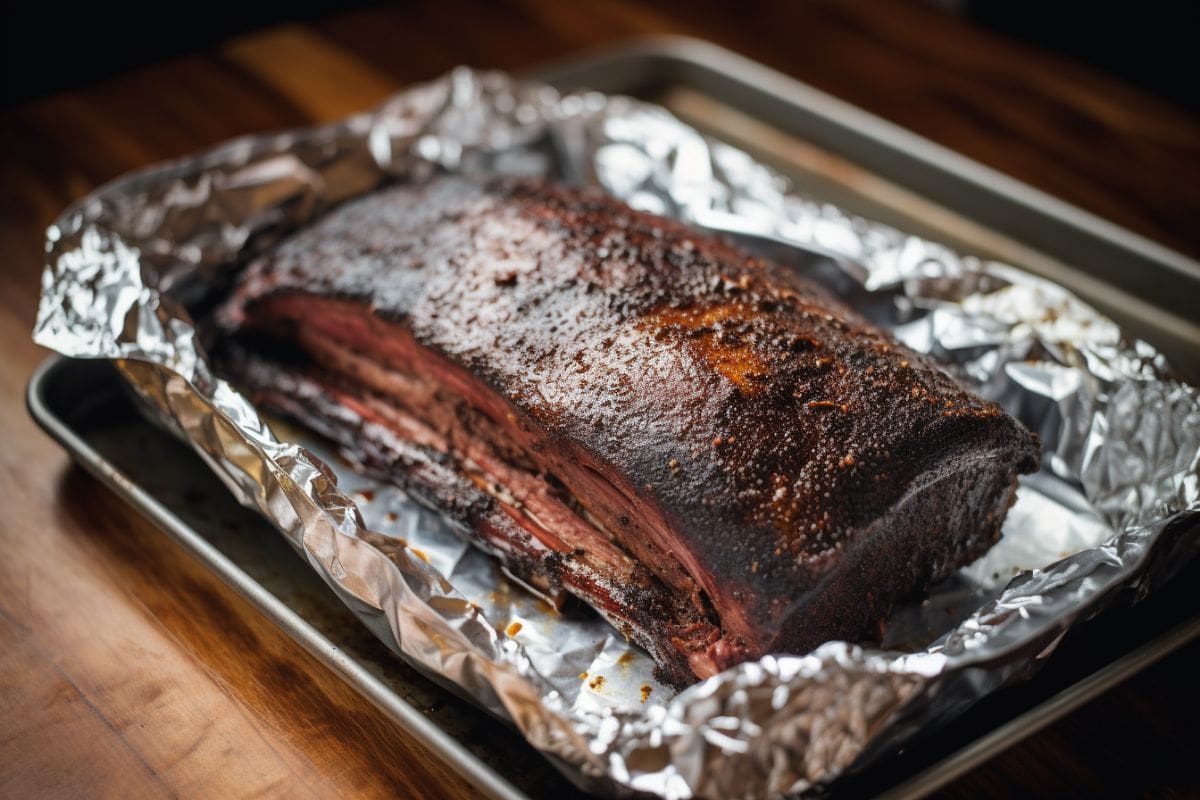
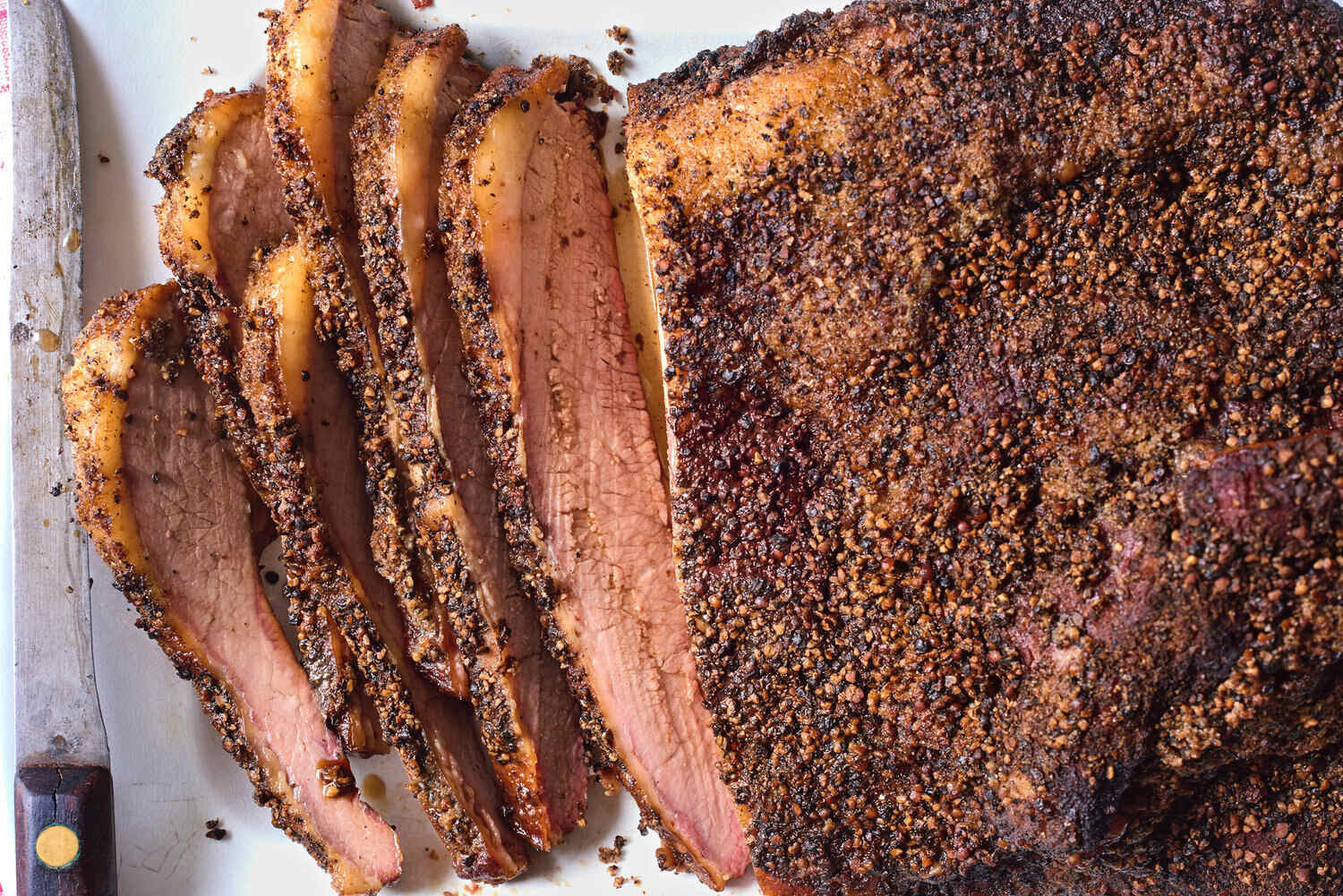

0 thoughts on “How To Store Brisket After Smoking”